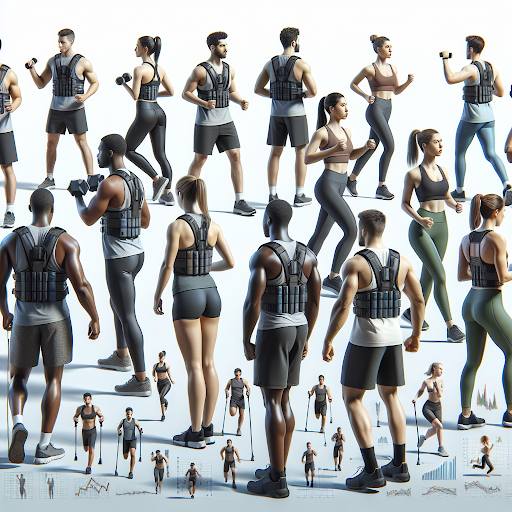Weighted Vests: Gains or Gimmick?
The Truth About Weighted Vests: Separating Social Media Hype from Science
We've all seen them—those Instagram reels and TikTok videos featuring fitness influencers strutting through their morning walks wearing what looks like a fashionable bulletproof vest. Weighted vests have exploded across social media, with promises ranging from miraculous bone density improvements to effortless muscle gains. But here's the million-dollar question: Are these claims actually backed by science, or are we witnessing another wellness trend that's heavier on hype than evidence?
The Rise of the Weighted Vest Movement
Scroll through any fitness corner of social media, and you'll encounter enthusiastic testimonials about weighted vests. Influencers particularly target women navigating perimenopause and menopause, promising that simply strapping on extra weight during daily activities will maintain bone strength and muscle mass. It's an appealing narrative—who wouldn't want to supercharge their regular walk around the neighborhood?
The concept seems logical enough. Add weight, increase resistance, build strength. Simple, right? Not quite.
What Science Actually Says
Recent fact-checking by Oregon Public Broadcasting reveals a more nuanced reality. Yes, weighted vests do offer legitimate benefits—but they're not the miracle solution social media might have you believe.
Here's what research actually supports:
The Good News:
- Improved posture: The added weight can enhance body awareness and encourage better spinal alignment
- Increased calorie burn: You'll definitely torch more calories carrying extra weight
- Enhanced cardiovascular health: Your heart works harder, improving aerobic fitness
- Greater workout intensity: Perfect for those looking to level up their regular routines
The Reality Check:
When it comes to the more dramatic claims—significant bone density improvements and substantial muscle strength gains—the scientific evidence becomes surprisingly thin. Experts emphasize a crucial distinction that social media often glosses over: effective bone and muscle strengthening requires targeted resistance exercises through a full range of motion. Simply wearing a weighted vest while going about your day doesn't provide the specific stress patterns your bones and muscles need to adapt and grow stronger.
The Perimenopause Promise: A Closer Look
One of the most prevalent narratives online connects weighted vests to maintaining bone and muscle health during hormonal transitions. While this messaging resonates with many women seeking proactive health solutions, current research paints a different picture. Studies examining weighted vest use alone show minimal or no significant benefit for bone health—a finding that might disappoint those hoping for an easy fix.
This doesn't mean weighted vests are useless during menopause. They can absolutely encourage more physical activity and add challenge to existing routines. But expecting them to single-handedly combat age-related bone loss? That's where science pumps the brakes.
The Bottom Line: A Tool, Not a Solution
Think of weighted vests like seasoning in cooking—they can enhance what's already there, but they can't replace the main ingredients. Traditional resistance training, with its targeted movements and progressive overload, remains the gold standard for building bone density and muscle strength.
Here's how to think about incorporating weighted vests intelligently:
1. Use them to intensify cardio workouts rather than replace strength training
2. Start light and progress gradually to avoid injury
3. Combine with a comprehensive fitness program that includes resistance exercises
4. View them as one tool in your fitness toolkit, not the whole toolbox
Moving Forward with Realistic Expectations
The weighted vest trend illuminates a broader pattern in wellness culture—our perpetual search for the one simple trick that will transform our health. The reality is messier but ultimately more empowering: lasting fitness comes from consistent, varied efforts rather than any single magical solution.
Does this mean you should skip the weighted vest? Not necessarily. If strapping on extra weight motivates you to move more, enhances your workouts, and feels good, go for it. Just don't cancel that strength training session or expect miraculous bone density improvements from your weighted walks alone.
The most effective approach? Embrace weighted vests for what they are—a useful tool to increase workout intensity and burn more calories—while maintaining realistic expectations about their limitations. Pair them with proper resistance training, and you've got a winning combination.
What's your take on fitness trends that promise dramatic results? Have you tried weighted vests, and if so, what was your experience? Drop a comment below and let's separate the hype from the helpful together.



